Being a koi hobbyist can be as rewarding as it is sometimes challenging. Outdoor koi carp often are at risk from environmental conditions or predators-like the raccoon that tragically made my favorite fish a midnight snack.

Diseases can also pose a challenge for koi owners. Even though they are known to be a hardy breed of fish, that does not mean they never get sick. There are a variety of illnesses and infections that can make a healthy swimmer become a sickly floater.
This article will discuss how to identify sick koi fish and some of the various diseases that affect them. We will also discuss what to keep on hand in case your fish gets sick, and a few tips on preventing koi diseases and infections.
Unfortunately, koi are unable to verbally communicate when they feel under the weather. Caretakers have to look for signs and symptoms to evaluate a fish’s health. The next time you’re gazing admiringly at the bright colors of your koi, take a moment and ask yourself a few questions about what you see.
Check out your koi’s appearance. Healthy fish have clear, bright eyes, smooth scales and fins, and appropriate body mass. Take some time to do a quick body scan of your fish to check for the following symptoms:
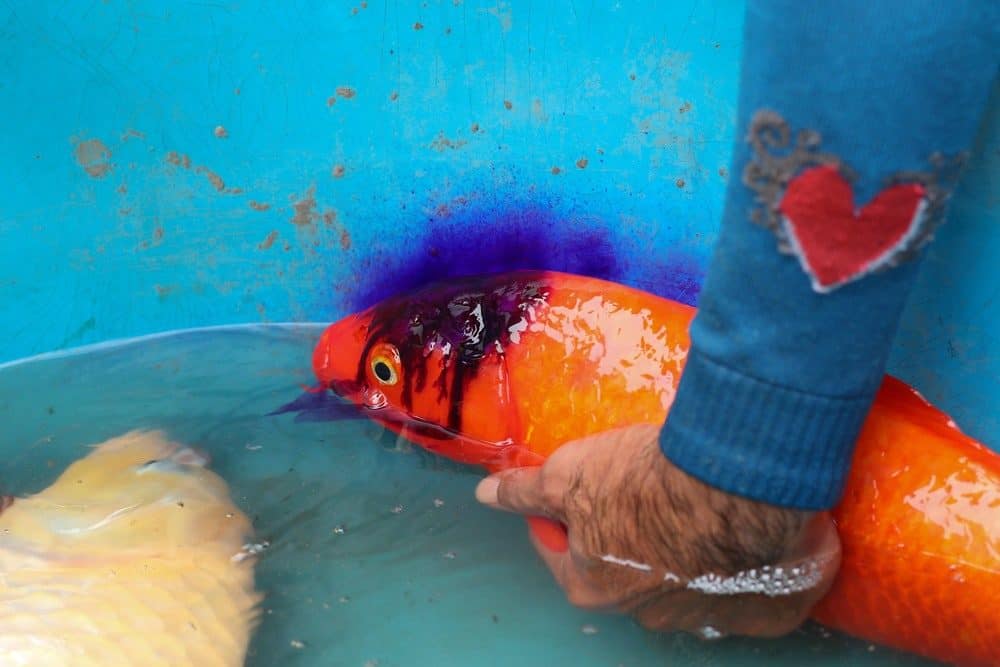
Fish that exhibit one or more of these symptoms are likely diseased.
Often when we are feeling sick the last thing we want to do is eat. The same thing also can happen to koi. Monitor your koi’s eating habits to make sure they are eating appropriate amounts.
Healthy, growing, well-fed koi should finish roughly 2-4% of their body weight in food within 5 minutes. Lack of appetite can be an early indication of an underlying illness or infection.
Healthy koi typically swim together or near one another at varying depths. Fish that keep separate from the group might not be in good condition. More obviously, ones that spend a lot of time gasping towards the surface or swimming listlessly on the bottom are likely to have some health issues causing the behavior.
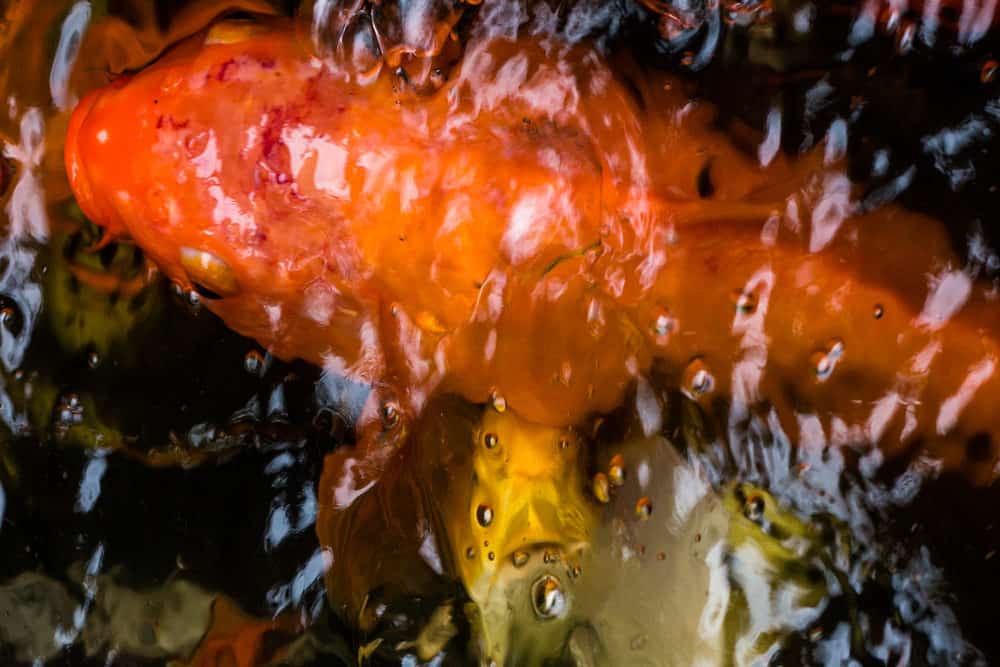
Notice their swimming patterns as well. Evaluate any fish swimming with fins kept close to their bodies or that constantly rub against objects in the pond. Look for any jerking, twitching, or instability in their swimming patterns. Check any koi that exhibit erratic or irregular behaviors and movements for disease.
Koi diseases can be categorized into four main categories: bacterial, parasitic, viral, and fungal infections. Diagnosis and treatment vary by category of disease.
Dropsy is not caused by one particular bacteria, but rather is usually the result of a bacterial infection that affects the fish’s kidneys. Koi with Dropsy will appear bloated and have difficulty swimming upright. They often have raised scales and bulging eyes in the later stages of infection as well.
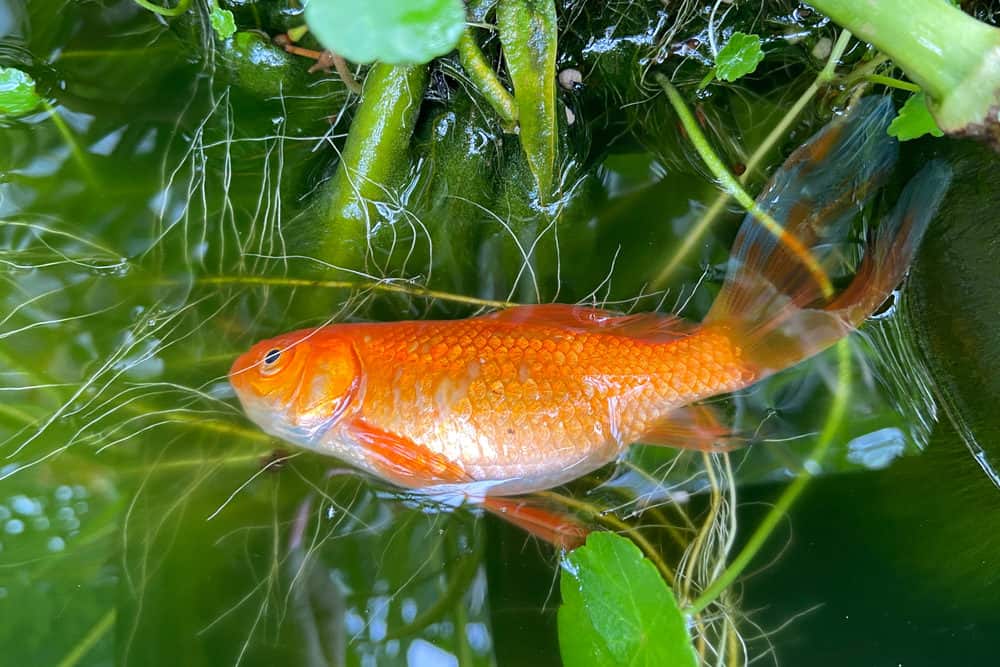
Dropsy is often fatal but is treatable if caught early. Care protocol includes antibiotics and increased water salinity and temperature.
Columnaris is not a common infection in koi, but the bacteria that causes it is found in all pond water. Often called Fin Rot, Columnaris typically only affects stressed or injured fish with poorly functioning immune systems.
Koi with Fin Rot will have fins that appear tattered or clamped closely against their body. They might also develop lesions, and discoloration on patches of their body, including around the eyes, mouth, and gills.
Unfortunately, koi with Columnaris infections face high mortality rates. Sick koi fish should be quarantined and given a salt bath. Clean external wounds with hydrogen peroxide and administer appropriate antibiotics.
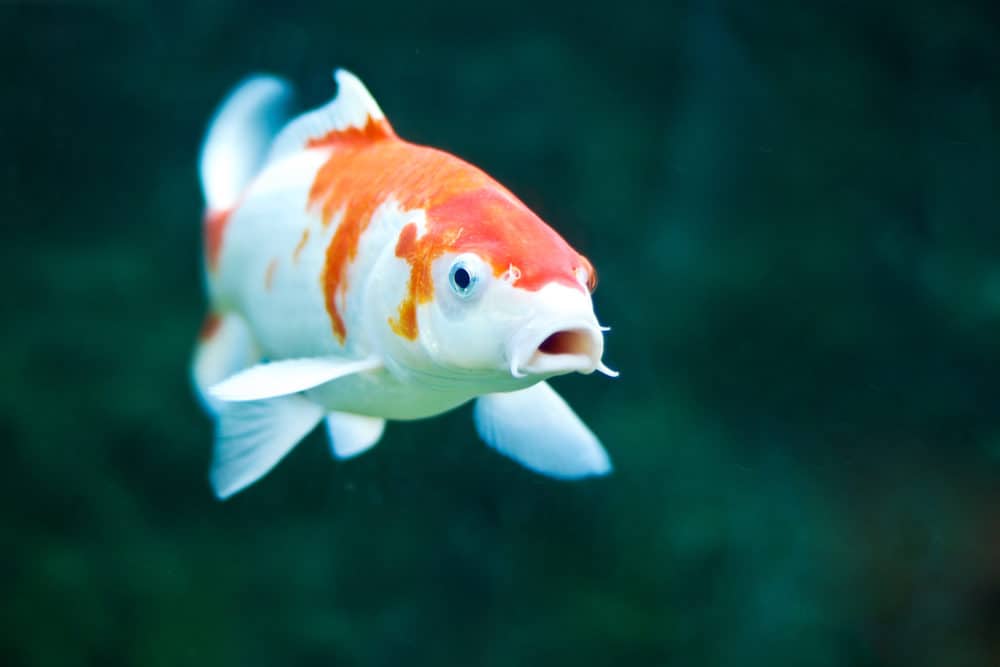
The most common bacteria to cause disease in koi is the Aeromonas. Like Columnaris, the bacteria exist in virtually all pond water. There are different strains of the bacteria, but they all can cause ulcers and internal infections in stressed fish with weak immune systems.
Treatment options are likewise similar to those for Columnaris. Any visible wounds should be cleaned with hydrogen peroxide and coated in antibiotic ointments. Feeding your fish a healthy diet, maintaining a low-stress environment, and excellent water quality can prevent this infection.
Ich is a parasite that attaches to a fish’s skin. Ich has a spotty, white appearance and can affect the entire body-including scales, fins, and gills. Infected fish might also have a lack of appetite and rub against pond objects.
Ich can be quite dangerous for fish but is fortunately relatively easy to treat. There are many brands of anti-parasite formulas specifically for Ich. Most can be used to treat the entire pond to prevent further infections.
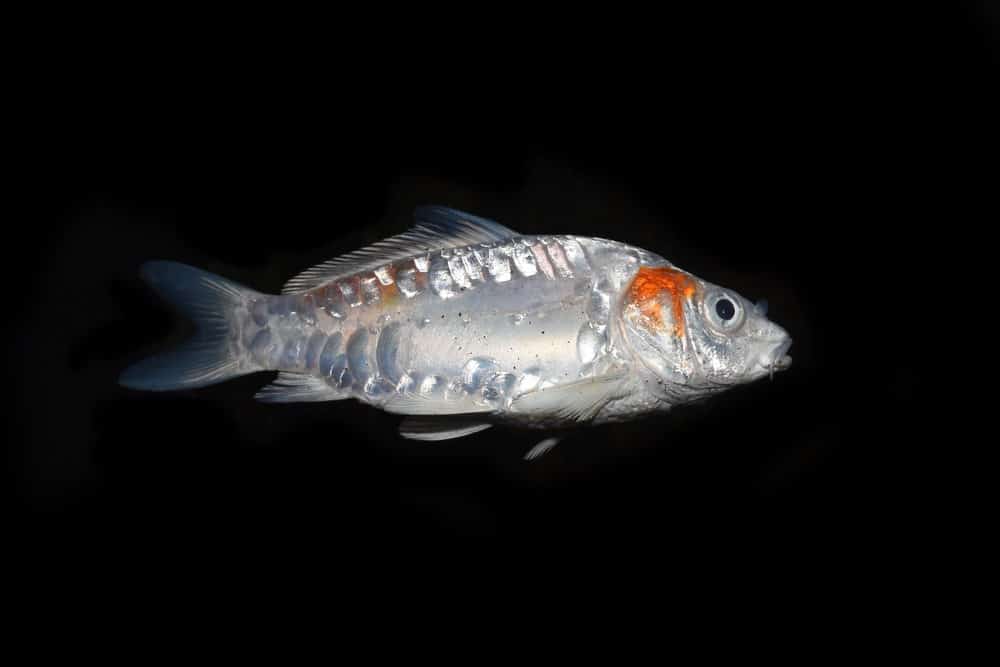
One of the more dangerous and difficult to diagnose parasites is Costia. The parasites are microscopic and often go undetected until the fish has become seriously ill. The symptoms overlap with many other diseases, making it even harder to diagnose.
Koi infected with Costia will often eat and move less, keep their fins close to their sides, rub against pond objects, and produce more bluish-gray colored slime and mucus. Depending on the severity of the infection, it can be treated by administering anti-parasitics, cleaning open sores with hydrogen peroxide, and adjusting the pond’s salinity.
Two other microscopic parasites, Chilodonella and Trichodina, present similar symptoms to both Ich and Costia. Each can cause white patches or lesions on the koi’s skin. Infected koi often have a lack of appetite, rub against pond objects, and show signs of difficulty breathing.
Both parasites can be treated by adjusting the pond’s salinity and using anti-parasite medications like formalin or potassium permanganate.
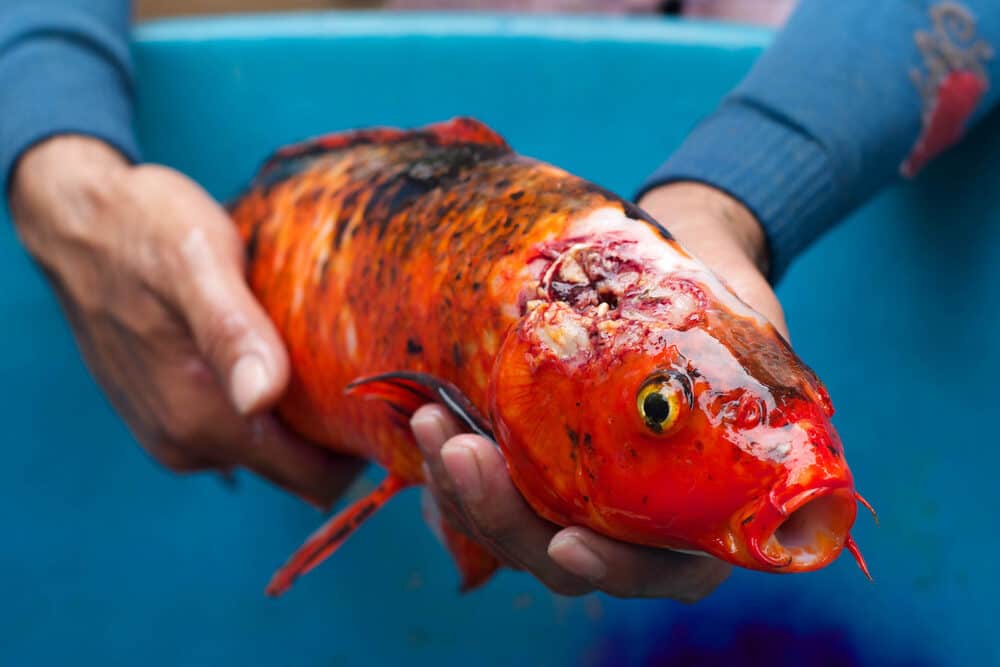
Flukes are yet another type of tiny invaders that can threaten a koi’s health. There are two main types of flukes-Gill Flukes and Skin Flukes. Both have hook-like anatomy that causes damage to a fish’s skin and becomes a vector for bacterial infections.
Koi with flukes will appear weak or lethargic and often be separate from the group. Their skin might produce excess mucus and be red or inflamed.
Fish Lice are incredibly common pond parasites. They are roughly 5-10mm long and resemble tiny horseshoe crabs. Fish Lice will often attach around the fins and mouths of koi, but can be found on any part of the body.

Fish Lice can be killed with anti-parasitics like potassium permanganate and removed with tweezers. Any sores left behind should be cleaned with hydrogen peroxide and topped with an antibiotic to prevent other infections.
Anchor Worms are another visible parasite that can plague koi. They attach to the fish by burrowing into the fish’s tissue and “anchoring” themselves in place. The trauma caused by the worm’s attachment can cause bleeding and open sores, making the koi more susceptible to other types of infections.
Sick fish with Anchor Worms present the same lethargy, lack of appetite, difficulty breathing, and pond object rubbing as fish infected with other parasites. Anchor Worm treatment uses similar anti-parasitic and antibiotic protocols as previously mentioned parasites.
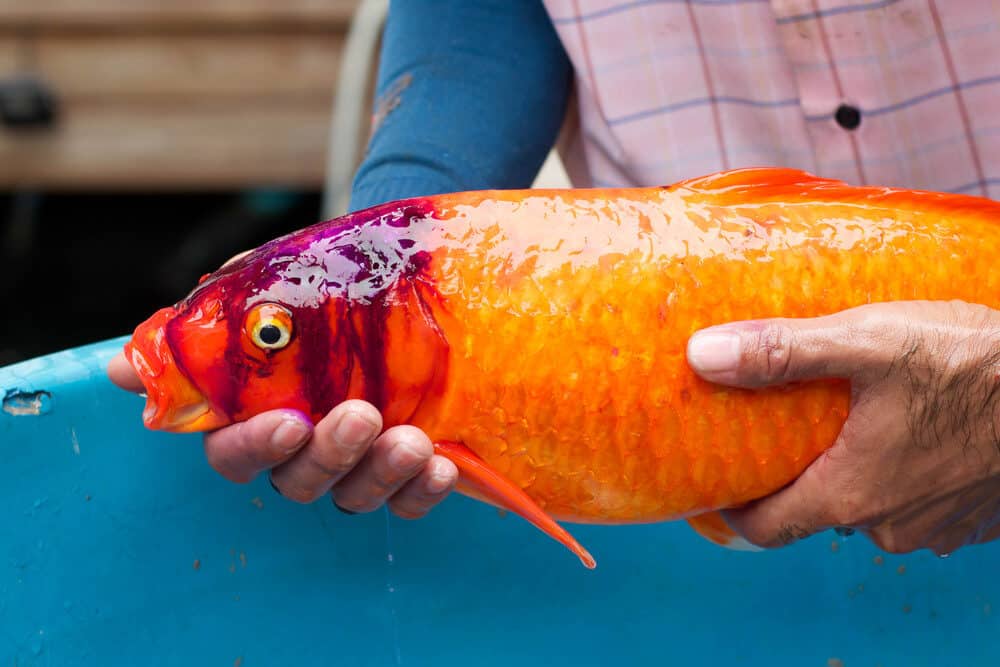
Koi Pox, or Carp Pox, is a type of herpes virus that does not typically cause any symptoms in healthy fish. Koi that do show symptoms often have weakened immune systems that prevent them from fighting it off. The main symptoms are sores that look like “candle wax.” These lesions can appear all over the fish’s body.
While there is no treatment available, supporting the koi’s natural immune system can improve symptoms. Increasing the water temperature in the pond, keeping the water clean and free from harmful bacteria and chemicals, and feeding the fish a healthy diet can help them heal more quickly.
Koi Pox's more virulent and fatal cousin, Koi Herpes Virus (KHV) has kept more than a few doting koi keepers awash with worry. KHV has a staggering 80-100% estimated mortality rate. Fish that do survive will carry the virus with them for life, making it possible for them to transmit it to others.
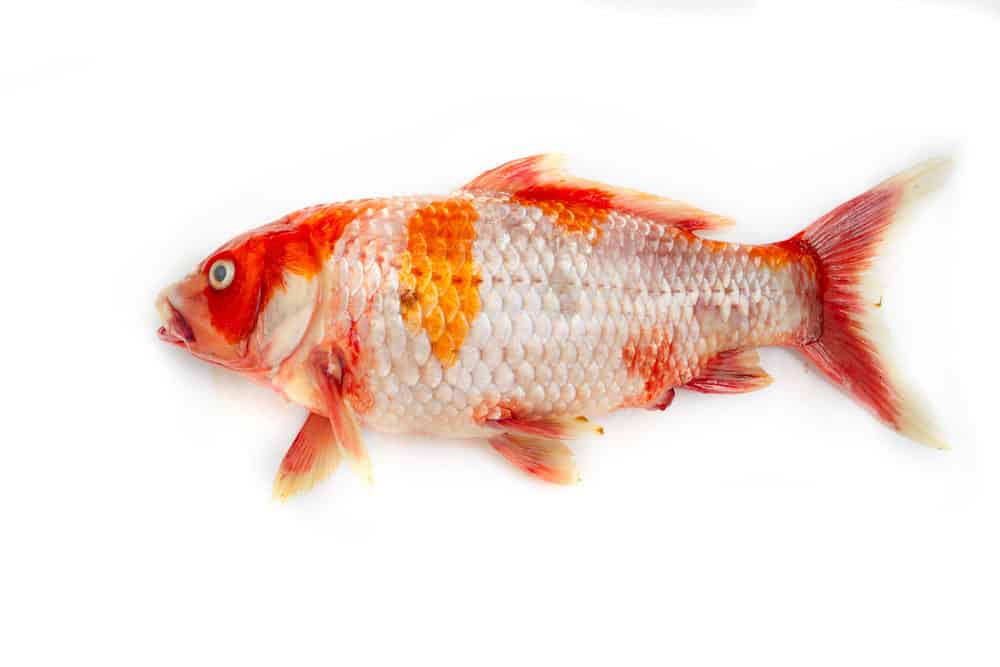
Infected fish suffer from bleeding gills or red lesions that turn white as the gill tissue necrotizes. The disease can also cause sunken eyes and enlarged internal organs. KHV positive koi will exhibit signs of respiratory distress, have difficulty swimming, and become increasingly susceptible to secondary diseases and infections.
Like Koi Pox, there is no available treatment for KHV. Increased water temperatures can potentially cause a marginal survival rate improvement. KHV's incredible morbidity rate and infectiousness have led many to depopulate their entire ponds to prevent further spread.
This freshwater fungus is the most common to affect koi. Typically found in colder water temperatures, Saprolegnia can present itself as gray or white cotton-like growths. It is almost always caused by injuries or damage to the koi’s mucus coating that allows the fungal spores to grow.
Good water quality and filtration systems can prevent Saprolegnia infections. Active infections can be treated by bathing infected koi in malachite green, increasing the pond’s overall salinity, or adding careful dosages of potassium permanganate to the pond.
A sick koi fish’s condition can deteriorate rapidly. It’s the sooner the better when it comes to treating sick koi fish. Few things are as frustrating as being unable to find the right medication in the store or having to wait for shipping while you watch your fish suffer. Keeping commonly needed products and medications handy can save not only your affected fish, but your peace of mind as well.
A few items to keep in your emergency medical fish kit include:
Each of these items can help treat various bacterial and parasitic infections in a pinch- or at least tide your fish over until you have time to find specialized or more effective treatment options.
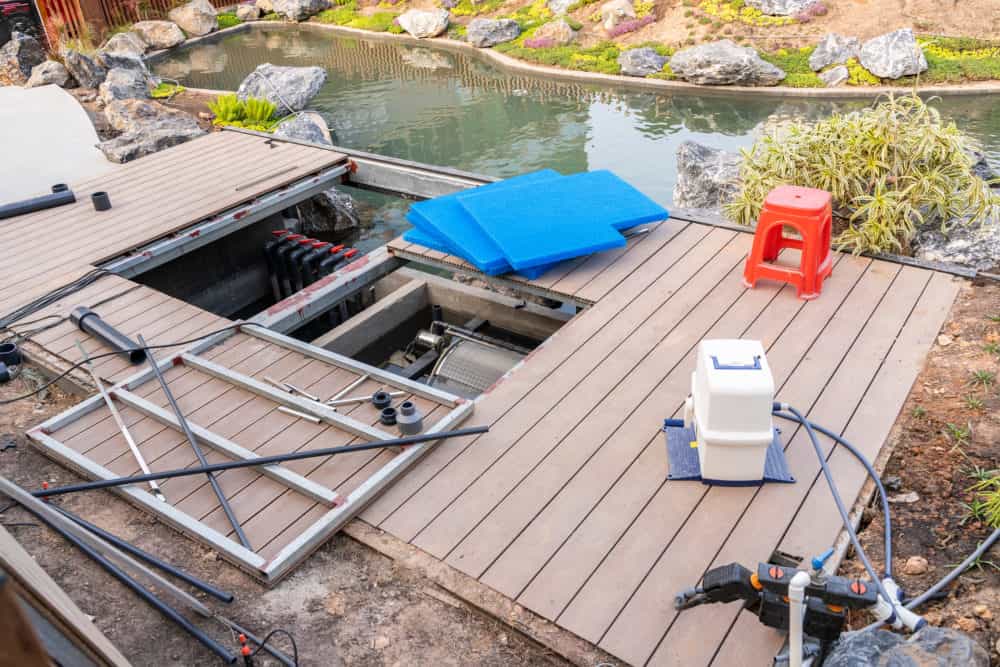
As the saying goes, an ounce of prevention is worth a pound of cure. Caring for koi properly will give the fish a better quality of life and help to keep them from getting sick. There are a few measures you can take to make sure your koi are both happy and healthy.
Koi ponds often conjure images of tranquil and relaxing environments. While koi ponds might give us zen vibes-the fish need to find their own inner peace as well. Stress is the most common and likely culprit for many koi illnesses. Koi can become stressed because of environmental factors like overcrowding or poor water quality.
Water quality can make or break a pond. While there is some contention on what constitutes the best water conditions for koi, water quality and filtration have a significant impact on the life and health of your fish.
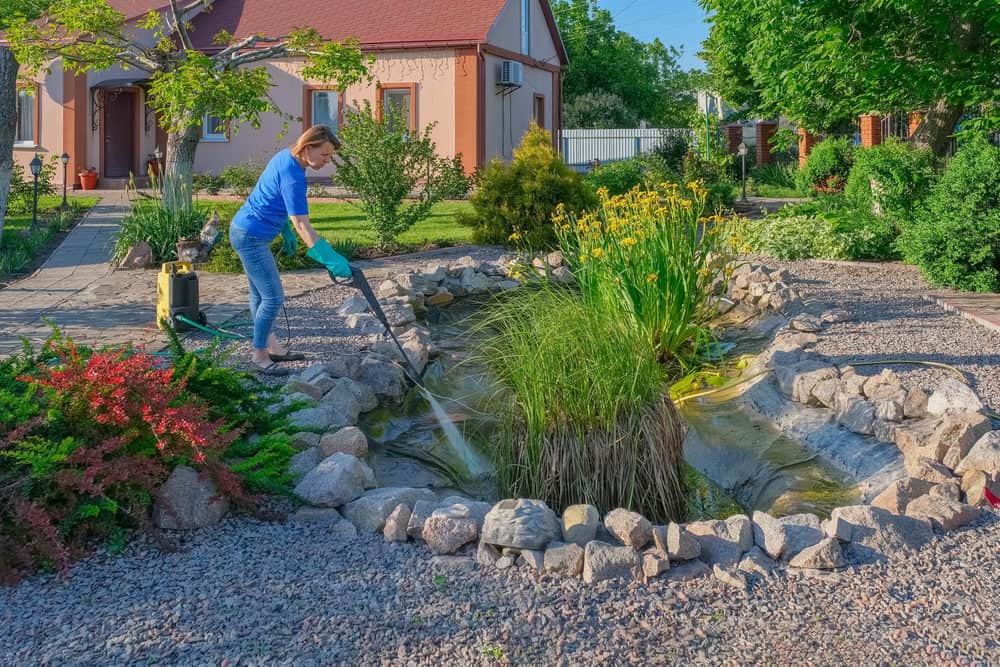
There are several factors to consider when checking your pond's water quality. Oxygen, pH, nitrogen, and levels of bacterium all need to be balanced appropriately for healthy fish. Consider your pond’s water source and the environmental factors around it as well. Chlorine from city water or pesticides from field runoff can have a detrimental impact on your fish.
Adding new koi to your existing pond population can pose some serious health risks to your koi if not done properly. Stress from the transportation and being introduced to a new pond can cause health problems for the new fish. Old fish could be harmed by any unknown diseases the new fish might carry.
For the safety of all the koi, keep new fish in a separate tank for a full three weeks to make sure they are free of disease and healthy enough to introduce to the other fish. It might seem tempting to skip or shorten the quarantine, but it is worth the time and effort to prevent a disease outbreak for the benefit of your healthy fish.



